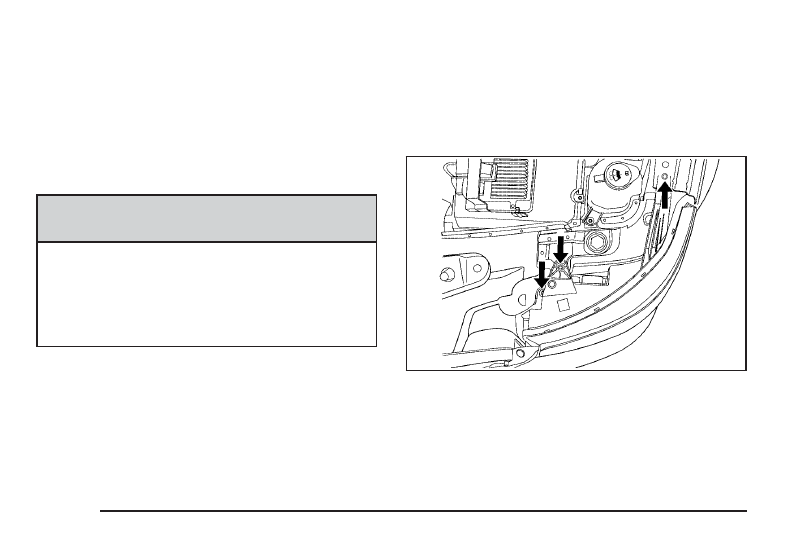Pontiac Torrent (2006 year). Manual - part 18

Bulb Replacement
For the proper type of replacement bulbs, see
Replacement Bulbs on page 5-44.
For any bulb changing procedure not listed in this
section, contact your dealer.
Halogen Bulbs
{
CAUTION:
Halogen bulbs have pressurized gas inside
and can burst if you drop or scratch the bulb.
You or others could be injured. Be sure to
read and follow the instructions on the bulb
package.
Headlamps, Front Turn Signal,
Sidemarker, and Parking Lamps
To replace one of these bulbs, do the following:
1. Open the hood. See Hood Release on page 5-11
for more information.
2. Remove the three headlamp assembly attachment
screws.
3. Pull the headlamp assembly toward you to release
it from the hidden, lower headlamp mount. The
headlamp assembly will need to be carefully
disengaged from the vehicle.
5-42